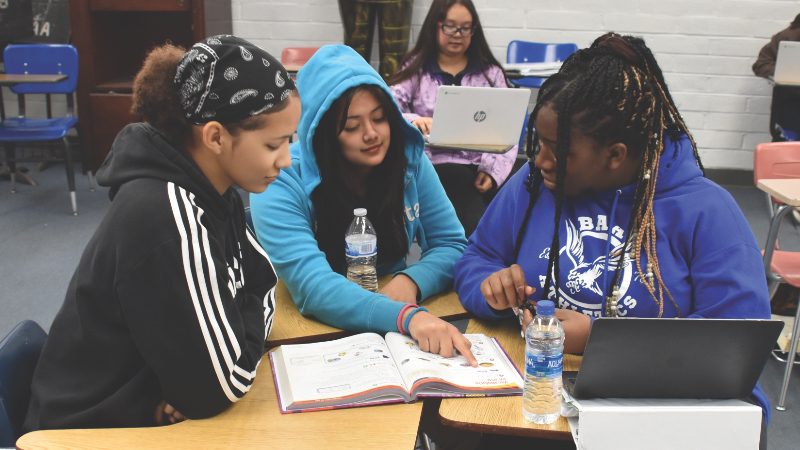
My experience with Adventist education has revealed that we are called to provide “something better.” Of course, that something better is Jesus, but what does that mean for a family wanting an experience for their students that prepares them for the gap between now and eternal life? What should that look like, and how will we provide that for our students?
With the objective of “Building Leaders Who Serve,” a team of educators began asking questions of ourselves and our programs. We asked things like: How are students being prepared to serve in this 21st-century world? How are students being led to find their unique gifts and talents? How can our schools work together, collaborate, and create a network or community of learners for those in our small schools as well as our larger ones? And how do we encourage our elementary students to go on to attend our only Adventist high school in Arizona, Thunderbird Adventist Academy, and continue a path of growth and development during those critical years of decision-making?
Some work had already been taking place at Thunderbird Christian Elementary (TCE). Principal Chandra Young has been trained and certified in hands- on, career-based STEM modules from the Paxton- Patterson company. She and I made plans to purchase some of these modules that could either be stationed at a school for shared, on-campus use or stored in the conference education office to be lent out to all the schools in the conference.
We began to write grants to purchase the expensive modules, which are uniquely designed for a real, hands-on STEM experience meant to help students delve into career possibilities. Students would be able to take part in learning labs that include filling teeth in the dentistry module, stitching up a prosthetic arm in the nursing module, or designing movies in the digital animation module.

Thunderbird Christian Elementary had already started their STEM lab with teacher and filmmaking major Kelsie Nielsen hosting two of our small schools and assisting students in using a green screen and videography skills to capture, create, and produce videos. The students were excited to
learn and anxious to do more.
As we analyzed the results, we were still missing a piece. How do we connect all the dots for students and make STEM a part of the bigger picture of Building Leaders Who Serve? God began to move in our hearts and minds, and what came out of prayer and consideration was a plan called G.I.V.E. The acronym explains the overall outcome of what we want students to do: Growing Innovators through Vital Experiences. We must grow students, not just expect them to make critical connections by themselves. Through G.I.V.E., we hope to help students see the STEM modules as just one piece of being a 21st-century learner, which is going to be a driving force behind finding God’s purpose for their lives. We seek to encourage the development of a community of learners who believe and aspire to find God’s purpose and who are also searching to build their skills and resources to lead and serve wherever and however God calls them.
Ultimately, building leaders who serve God is the quest of every Adventist School. After building the plan, we worked on implementing it.
Glenview Adventist Academy (GAA) caught the “fever,” and the staff made plans to house a 3-D printing lab so that other Adventist schools from around the state could visit the school and partner with the GAA students to use the 3-D printers to create, collaborate, think critically, and communicate with each other. These are essential skills for 21st-century learning, and GAA was anxious to share their program. Thunderbird Academy has begun plans to renovate their entire science wing to create a STEM-based center to continue the hands-on learning and collaborating at the secondary level.
However, we still had two unanswered questions: How will we connect students to TAA, and how will we teach them to serve through these investigative learning opportunities? Further prayer and conversations brought the idea of “tracks,” which incorporate deliberately designed and coordinated outreach projects that involve community service and relationship-building. These tracks or pathways of learning would help students see the connections between what they were learning in their elementary school classrooms and what was being taught at Thunderbird Adventist Academy—while at the same time realizing the needs of the community around them.

The plan’s outline for the communications track allows a student who shows interest or ability to visit TCE, where the filmmaking and video production modules are stored and hosted. Or their school could borrow modules on gaming technologies, digital photography and animation, or marketing and design from the conference education office to learn more. The student would participate in outreach projects such as collaborating with Good News TV to create outreach videos, school promotional videos, or other inspirational media for use as outreach. If they continue to show interest, they can connect to Thunderbird Academy and learn to create podcasts with the campus’s Real Talk podcast team, help host a film festival for other Adventist academies, or participate in a variety of other projects. Another element is to invite career professionals to share their expertise and wisdom with the students.
Each track is evolving as more people get involved and input is given. The team has designed tracks for health, engineering, and environmental management, with plans to design others. Communicating these tracks will bring direction, clarity, intentionality, and purpose, not only to the wonderful learning opportunities but also to the mission of our schools: Building Leaders Who Serve. We are excited to watch how powerfully God is providing and guiding in this process. If you would like to be a part of this exciting journey by offering your ideas, time, expertise, or financial support, please contact me in the Education Department, where offering vital, authentic learning experiences is what we are all about.
____________________
By Nicole Mattson





